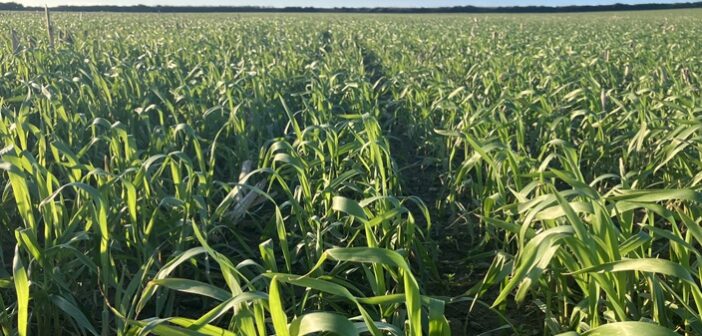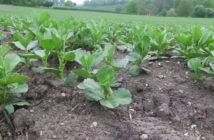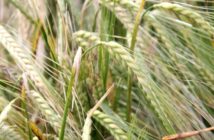Following the exceptionally dry growing season, careful consideration should be given to late summer and autumn drilled catch crop options that have potential to fill forage gaps.
So advises independent forage seed specialist Francis Dunne, who says factors such as drilling date, future grazing or cutting requirements, and evidence of varieties’ performance in UK conditions should all be taken into account.
“Given the very real threat of forage shortages this winter, farmers can ease the pressure by making the right drilling choices in the coming months,” he says. “Short term ryegrasses, including Italian or Westerwolds, are a viable option up to the middle of September, but if the drilling window is any later, with the catch crop perhaps following maize for example, then it will be better to grow a forage cereal, such as rye or triticale. Drilled as late as mid-October, these forage cereals have the vigour and low temperature active growth to build maximum root mass to support big, early spring yields.
“In any case, my advice to farmers is to play safe, not only in terms of drilling date but also with variety choice. It’s important that varieties are proven and have a good UK track record.
By mid-August, the opportunity to establish a crop that will deliver a significant autumn silage cut is diminishing, but there is still time for crops to provide some late season grazing, says Mr Dunne.
“Italian and Westerwolds ryegrasses could still potentially provide as much as three tonnes of dry matter per hectare as autumn grazing, drilled into early September,” he adds, “but it’s important not to overgraze if the aim is to use this as an early silage cut in the spring. Also, take care with variety choice, as not everything will have the winter hardiness to perform in the UK.”
Forage cereals become the best option for later drilling, with the New Zealand-bred forage triticale T101 Wintermax offering the most yield potential and at a reasonable cost, according to Mr Dunne.
“This variety is now considered the ‘go to’ cover crop for following maize in New Zealand,” he says, “and it has been a proven performer in the UK over the past two seasons. It establishes very quickly and is extremely winter hardy, and the earliest drilled crops can provide the option of a light, late autumn grazing. In most cases, however, the main grazing period will be the end of February to mid-April.
“Alternatively, from a September sowing, this forage triticale could provide a silage cut from as early as mid-April, with similar nutritional quality to Italian ryegrass. It will deliver up to five tonnes of dry matter per hectare and has been shown to out-perform forage rye in the UK. Also, with a large volume of seed now in production, it is a cheaper drilling option than forage rye.
“In a year when forage stocks look certain to be in short supply, this very vigorous and high yielding, proven forage crop has the potential to help livestock farmers reduce their winter feeding periods significantly.”
For farmers looking to fulfil a SAM2 commitment within an SFI agreement, T101 Wintermax can be combined with winter vetch or other fast-establishing species to create an over-winter, multi-species cover crop, even when drilled in early October.
“As with other cover crop options, take account of winter hardiness. Many varieties of vetch are not hardy. The best option is Hairy Vetch. This combines the best establishment vigour with excellent hardiness.”
T101 Wintermax forage triticale is available from seed merchants throughout the UK.




